28 January 1853: First ever infanticide prohibition home of India was started by Savitribai Phule[1].
Due to the Brahminical Social Order, those were the days when women irrespective of their caste and class were very much oppressed in all fields of life. There were many patriarchal and brahmnical traditions, values and rituals which were against women. Savitri Bai Phule, in Pune, worked hard in this regard too (apart from the education field). To resolve the dowery problem, she started organizing simple group marriages. When a women at any age happened to be widow (even girl child widow), she was forced to have her hair cut so that she could easily be identified as a widow. In this regard, she met with the people of barber community and requested them not to cut hair of widows. After a long pursuance, they got convinced. They boycotted the hair cut ceremonies of widows. The upper caste communities got infuriated with Savitribai due to the step taken by the barbers.
There were a large number of widows in the Pune City and the nearby villages during days. Adolescents and young girls were happened to more among in the widows. These widows were boycotted publicly and with meger financial support they were clandestine subjects to sexual exploitation. They happened to be pregnant due to lack of contraceptives or other measures. So they had to be victimized for the reason for which they had not been responsible. Women had to lose their life due to unhealthy ways of abortion. Many newborns were been killed after delivery by widows to avoid social ostracism. Many a times they had to leave their home.
On 28 January 1853 Savitribai started a shelter for such women – infanticide prohibition home – the first of its kind in India. In this shelter widows could give birth to their children and leave them there. Sixty six women gave birth to their children in that shelter upto 1873.This was a great historical work that Savitribai did at that time – in the dark ages. Later on this shelter started working as a hospital. Savitribai did not remain as one who served to widows but she went further in this regard. She adopted a child from a Brahmin widow (Kashibai) and thereby gave a message to the progressive people of the society. This adopted child was named Yashwant Rao who later became a doctor.
28 January 1866: Vishnushastri Pandit, inspired by Phule’s movement , opened an institution to promote widow remarriage known as Punar Vivahtojak Mandal in Pune[2].
Vishnushastri Pandit, during his student days gave a helping hand to the movement of the Phule couple in their efforts for girls education. Later he was a member of the educational institutions opened by Mahatma Jyotiba Phule. Further, he was the editor of Indu Prakash. He wrote fiery thought provoking articiles on the subject, made fervent speeches at important centres in Maharashtra and published a chain of booklets.
On 28 January 1866, Vishnushastri, inspired by Phule’s movement opened an institution to promote widow remarriage. The institution (a society) was known as Punar Vivahtojak Mandal(remarriage association). Soon there were many branches of the institution at Ratnagiri, Ahmedabad and other places.
Under the auspices of this insutition the marriage of one Pandurang Vinayak Karmarkar with a widow girl named Venubai, daughter of Prabhakar Bhat Paranjape, was celebrated amidst pomp and joy. The invitations to the wedding were sent out with signatures of seven sage-like men. Vishnushastri had deposited in the name of Venubai a sum of Rs. 2,000 out of the funds of the society, and presents worth Rs. 3,000 were showered on the newly-wed couple.
News of this marriage divided Maharashtra into two camps, and the battle was fought at Poona (now Pune) in 1870. A debate was held to decide the issue of widow remarriage. Both sides fought furiously. But one of the jurors from the camp of the reformers, for fear of persecution, slipped off, and the party of reformers lost the battle by two votes. Afraid of being excommunicated, some of the reformers surrendered to the orthodox. However, VIshnushastri did not give up the fight. He well knew that reactionaries Andrew tradition-mongers area always in a majority.
Later on Vishnushastri heroically married a Brahmin Widow in December 1874, after the death of his first wife.[3]
28 January 1976: Death of Bhante Jagdish Kashyap [4]
Bhikkhu Jagdish Kashyap was born in 1908 in Ranchi, Bihar (now Jharkhand), India. His birth name was Jagdish Narain, and the name Kashyap was given to him at his bhikkhu ordination in 1933.
He had done his BA from Patna College in 1929; MA in Philosophy from Banares Hindu University in 1931 and MA in Sanskrit from Banares Hindu University in 1932. After finishing his MA, Bhikkhu Kashyap, desiring to doctoral work in Buddhist philosophy, was advised to study Pāli, and so resolved to go to Sri Lanka, to his parents’ dismay. They relented in 1933 and he joined the Vidyalankara Pirivena (now the University of Kelaniya). He was ordained by Venerable L. Dhammananda Nayaka Mahathero. During his time at the Vidyalankara Pirivena he translated the Digha Nikāya into Hindi.
In 1936 in Sri Lanka he spent time in a forest hermitage to practice meditation. Towards the end of 1936 he returned to India and in 1937 settled at Sarnath where he was involved in scholarly and translating work, principally of the Pāli Canon into Hindi. In Sarnath he became associated with the Mahabodhi Society and was soon helping with the institutional organisation and social services. He became the headmaster of a new high school founded by the Mahabodhi Society. While in Sarnath he also worked for Benares Hindu University to offer courses in Pāli – even occasionally walking the 22 mile journey into Varanasi from Sarnath. This was because he persuaded officials to start these courses and even taught them from free.
During this time Bhikkhu Kashyap took on a young English monk as a live-in student for about nine months. Later on the monk became popular as Sangharakshita who went on to found the Western Buddhist Order (Trailokya Boudh Maha Sangha) in 1968.
Sangharakshita’s version of the Benares university job, as he understood from Kashyap:
“As he had already confided to me, he was there very much on sufferance. Dominated as it was by orthodox brahmins, the University had not wanted to have a Professor of Pali and Buddhist Philosophy at all, and Kashyap-ji’s appointment had been due to the insistence of the multimillionaire philanthropist Jugal Kishore Birla, a benefactor whose wishes the University could not afford to ignore. But though the University had been forced to appoint a Professor of Pali and Buddhist Philosophy it was not obliged to supply him with pupils. In fact it made it as difficult as possible for him to get any. Under University regulations, no one could take Pali without also taking Sanskrit. In other words Pali and Buddhist Philosophy were not allowed to become alternatives to Sanskrit and Hindu Philosophy. One could take Sanskrit and Pali, or only Sanskrit, but under no circumstances could one take only Pali. So effectively did these tactics limit the number of Kashyap-ji’s students that he never had more than three or four, sometimes none at all. For someone as devoted to his subject as he was this was a bitter disappointment. He had accepted the professorship only because he hoped it would enable him to make some contribution to the advancement of Buddhist studies and thus, indirectly, to the cause of Buddhism; but as it became more obvious every year that Pali and Buddhist Philosophy were unwelcome guests at the Benares Hindu University, he had come to the conclusion that he was wasting his time there and he was now thinking of resigning.
In 1949 he toured his ancestral homeland, the ancient province of Magadha, which was also the centre of ancient Buddhism. For the first time in many centuries the villages in Magadha saw a yellow robed bhikkhu, and were pleasantly surprised to find that he spoke their local dialect Magadhi. The locals had long forgotten their own history and Bhikkhu Kashyap was able to furnish many details. The very name of the state of Bihar comes from presence of so many Buddhist viharas in the past. He was able to point out the true identity of the images of Buddhas and Bodhisattvas which were being worshipped as Hindu gods or local deities. Villages such as Sari-chak, near Nalanda, had previously had an association with the Buddha’s chief disciple Sariputta. Finally he was able, by quoting passages from the Pāli texts, to demonstrate that Magadhi is still closely related to the Magadhi dialect.
After this visit Bhikkhu Kashyap offered to teach Pāli at Gaya College and at Nalanda College in Bihar-Sharif. Later, when the Bihar state government decided to start an institute for Pāli studies at Nalanda, he was the obvious choice to head the project. In 1951 the institute became the Nava Nalanda Mahavihara. In 1956 was the 2500th anniversary of the parinibbana of the Buddha, celebrated by the Indian government as the Buddha Jayanti. As part of the celebrations, Bhikkhu Kashyap’s work of bringing out a Devanagari edition of the Pāli Canon was accepted as an official project, and was jointly sponsored by the governments of Bihar and India. The first volume appeared in 1956 on the occasion of the Buddha Jayanti, and the rest followed over five years – guided to completion with enormous effort and marathon labour by Bhikkhu Kashyap.
During the Buddha Jayanti project Bhikkhu Kashyap returned to Varanasi and in 1959 was asked to become the first Professor of Pāli and Buddhism at the Sanskrit University of Varanasi. He remained there until 1965 when he returned to Nalanda for a second term as Director of the Nava Nalanda Mahavihara. He retired in 1973. Having earlier developed diabetes, he became seriously ill in 1974 and spent his last two years bedridden in the Japanese temple in Rajgir, from where he could see the Vulture Peak and the newly constructed Peace Pagoda. He died on 28 Jaunuary 1976.
—
[1] http://mukeshmanas.blogspot.in/2012/01/savitribai-phule-first-woman-teacher-of.html
[2] Tarkateertha Laxmanshastri Joshi, Jotirao Phule, book, part 1, section 3
[3] Editors Sanjay Paswan, Pramanshi Jaideva, Encyclopaedia of Dalits in India: Movements, book Pg 151
[4] D.C. Ahir. The Pioneers of the Buddhist Revival in India.






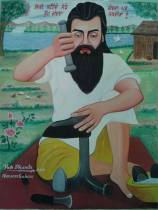
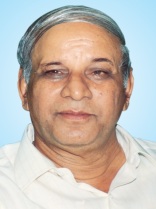

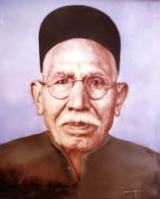

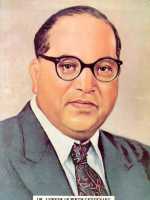
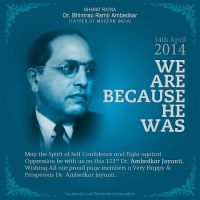

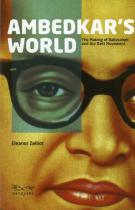
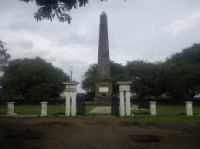

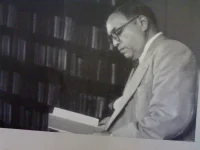
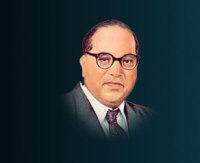
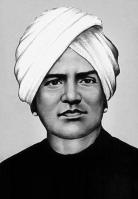


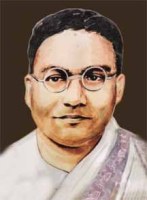


Pingback: माता सावित्रीबाई फुले के जन्मदिवस पर मान्यवर कांशी राम जी द्वारा दिया गया ऐतिहासिक भाषण। | Dr. B. R. Ambedk
Pingback: माता सावित्रीबाई फुले के जन्मदिवस पर मान्यवर कांशी राम जी द्वारा दिया गया ऐतिहासिक भाषण। | Dr. B. R. Ambedk
Pingback: Savitribai Phule – You owe her. But do you know her? | Dr. B. R. Ambedkar's Caravan
Pingback: The Beginning | brainysumedha
Pingback: Mahatma Jotiba Phule and Savitribai Phule’s contribution towards women empowerment | Dr B R Ambedkar's Caravan
I have great regard for respected Late Phule who open new doors of widows . I think the main cause of women and dalit torture was both of out of power vikram
LikeLike